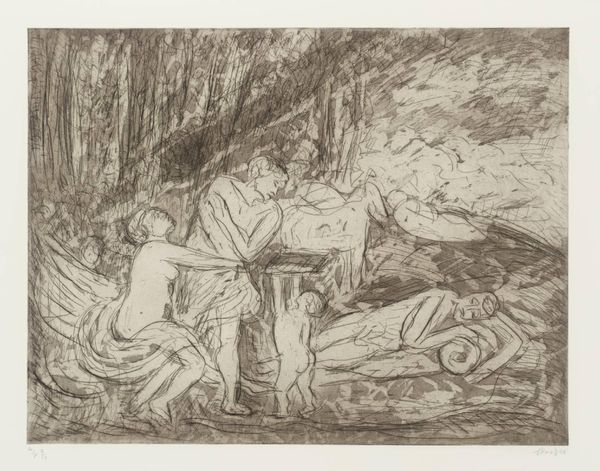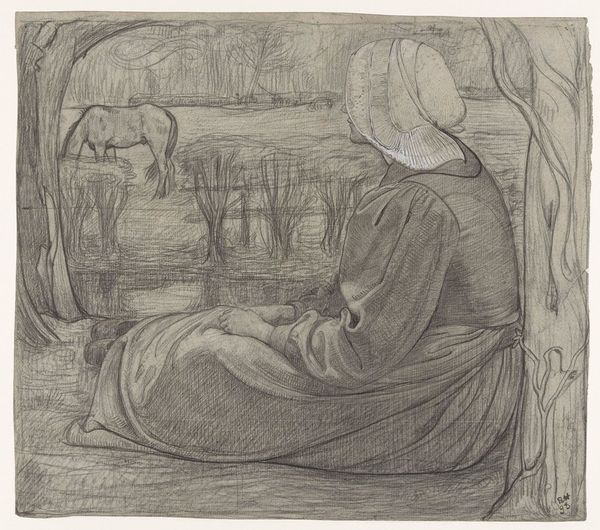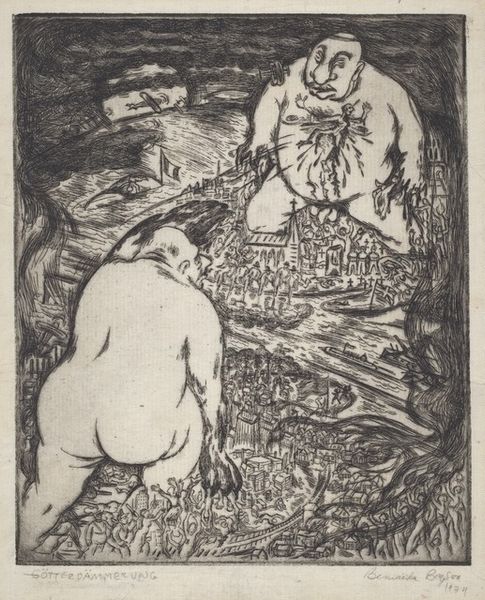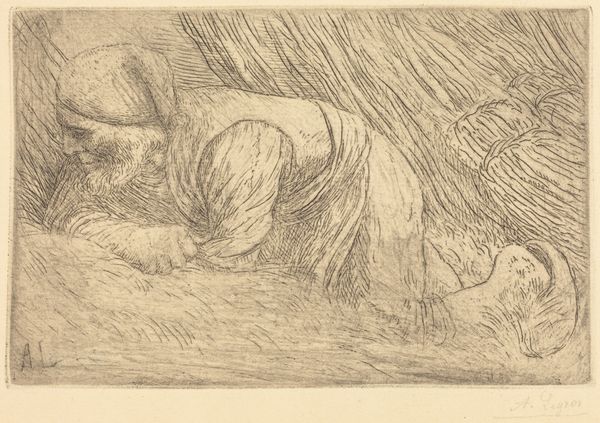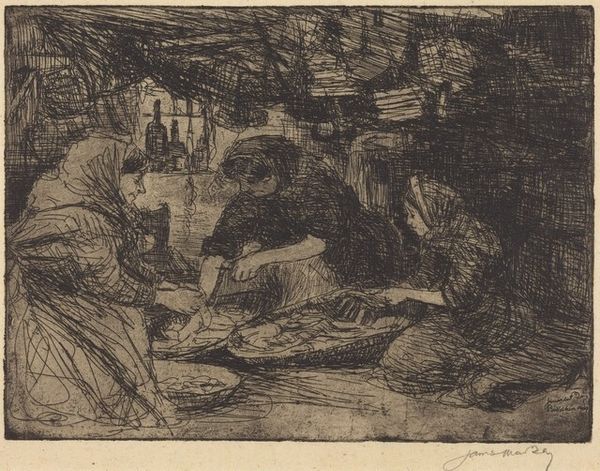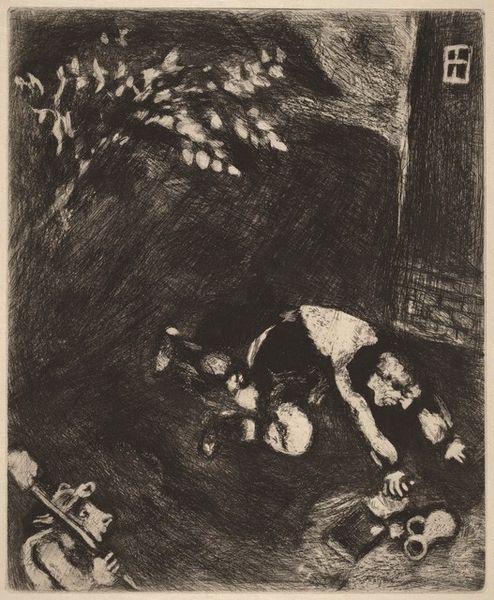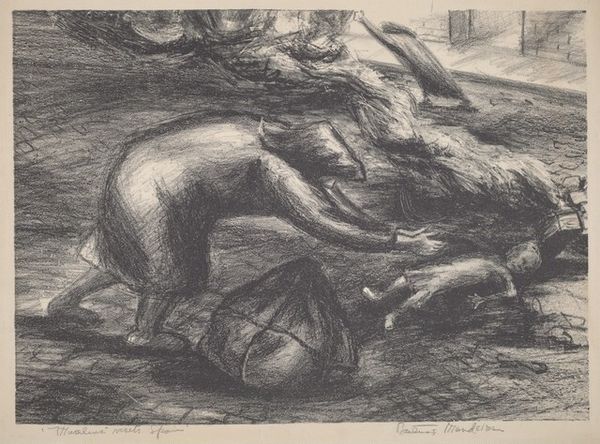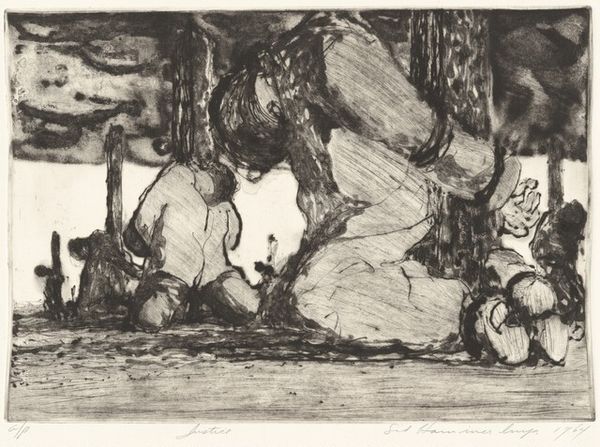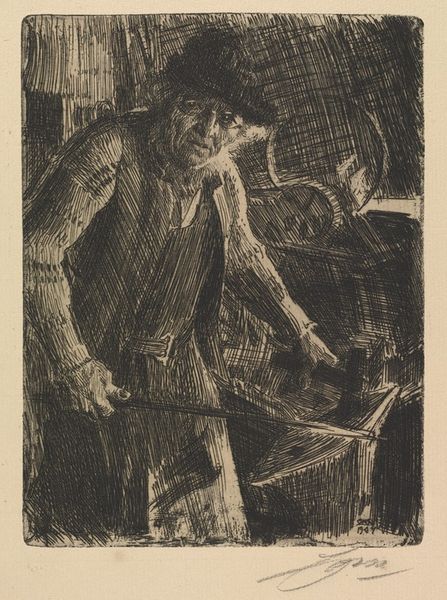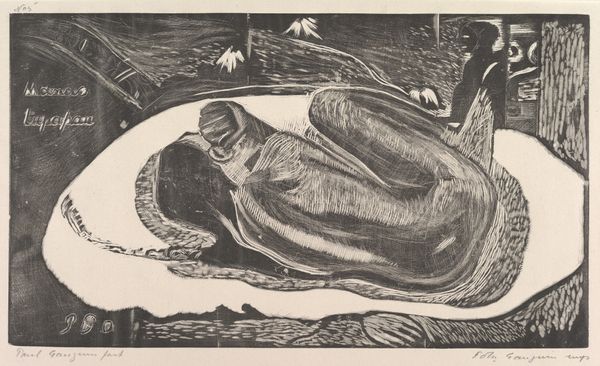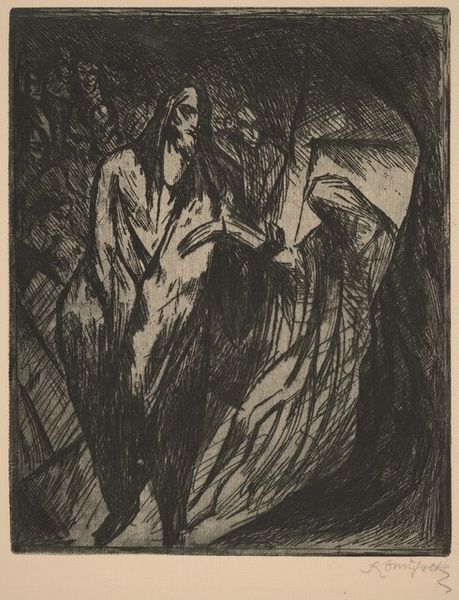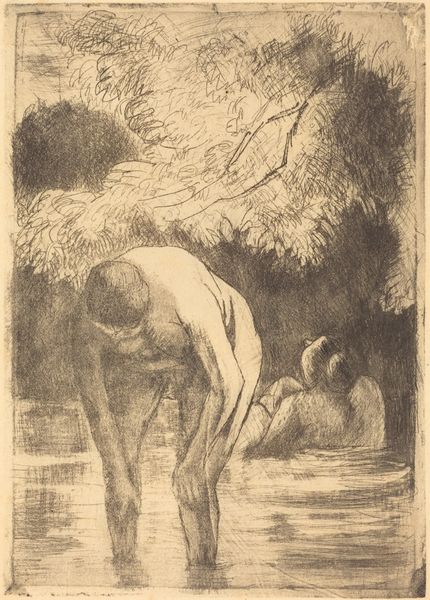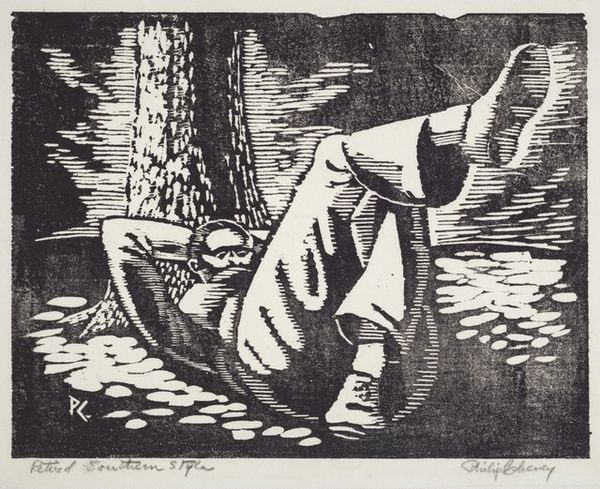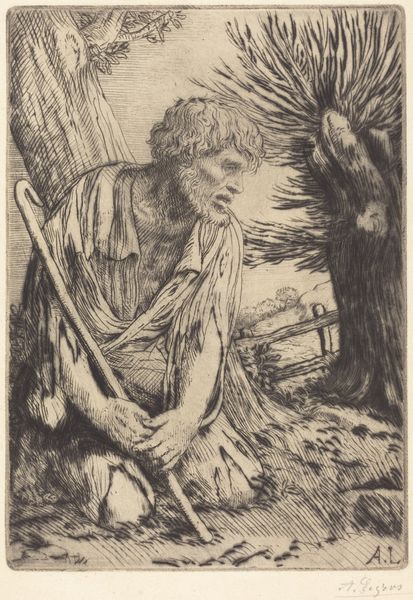
Dimensions: Image: 175 x 225 mm Sheet: 257 x 338 mm
Copyright: National Gallery of Art: CC0 1.0
Editor: So, here we have Ruth Leaf's etching, "Potato Diggers," made around 1946 or 47. I’m struck by how the intense lines almost trap these figures within the act of labor. What compositional choices do you notice that emphasize this feeling? Curator: I see a very interesting deployment of line and form. Leaf has deliberately used strong, angular lines to define the figures, especially in their bent postures, emphasizing the physical strain of the task. Consider how the horizontal furrows of the field create a flattening effect; this reduces depth and keeps our focus firmly on the foreground. Editor: That makes sense. The landscape isn't some picturesque backdrop, it is like a visual echo of their toil. Is there any specific way she achieves that flattening? Curator: Look closely at the tonal range. The lack of significant contrast compresses the space. Leaf opts for a narrow spectrum, preventing the eye from resting comfortably, so the workers' actions dominate. How do the shapes interact with each other and the frame? Editor: The curve of their bodies mirrors the curve of the land, right? And it is all packed quite tightly into the frame. I suppose it pushes that feeling of constraint, but does it create any sense of rhythm, too? Curator: Precisely. The repetition of bending forms could establish a visual rhythm, perhaps indicative of the repetitive nature of their work. The visual structure mirrors the work structure. What this communicates and *how* are what matter here. Editor: I see. It is interesting how formal analysis reveals so much about the themes. Thank you. Curator: My pleasure. Always look at the construction. From this point of view, "Potato Diggers" uses its inherent pictorial means to show us what the artist sees, how labor looks when reduced to fundamental shapes and textures.
Comments
No comments
Be the first to comment and join the conversation on the ultimate creative platform.
